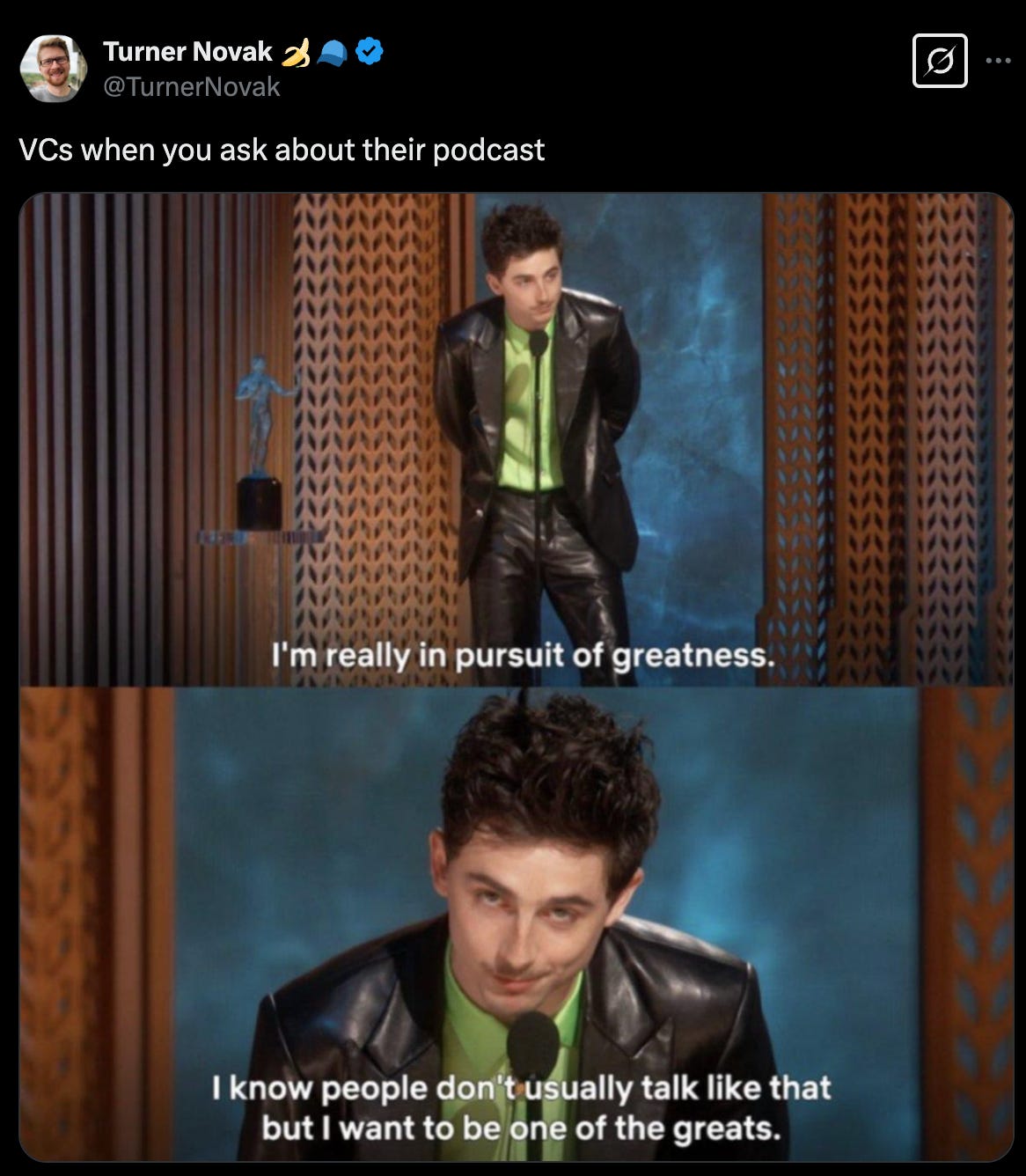Hi! I write about technology, careers, and whatever else is on my mind. You can expect a post every week (every two weeks at most).
If you’re not subscribed, join the rest of my readers using the button below:
I love a good meme.
Memes aren’t just entertainment - they’re signals of knowledge and perhaps the last bastion of humanity in an AI-driven world.
In our information-saturated ecosystem, where attention is scarce, memes function as remarkably efficient packets of meaning. They collapse complex arguments, observations, and cultural critiques into instantly digestible formats. Creating or appreciating a meme requires true understanding and shared context.
Therefore, the ability to make a good meme may just be the best indicator of expertise. To make fun of something, you must deeply understand it. You must be an insider.
Take this meme I saw last week. Instead of writing a thought piece on the abundance of AI app builders and differentiation, you could just post a meme (credit to Kyle Harrison).

As a meme, it also disarms those who might disagree. It’s funny and we can all have a laugh rather than get upset about factual correctness.
That’s the beauty of a meme.
The best memes are inside jokes
When Kyle poked fun at the AI app building landscape with the meme above, he put up a Bat Signal of sorts. One of the best parts of memes is that they clearly delineate insiders and outsiders.
The perfect meme is both hilarious to your target audience and completely illegible to outsiders.
Take Andrew’s tweet below. When I saw it, I laughed out loud. If I didn’t live in San Francisco, I’d ask “Who is Piper? And who is Ada?”

Perfectly executed 👌
Memes are a coded message that are widely broadcast but understood by a few.
The power in saying the quiet part out loud
“While there are a number of reasons a writer may be drawn to the use of self-deprecating humor, the effect is still a route to the insight and truth common to nonfiction’s goals.” - Andy Harper (Assay)
The insider/outsider dynamic is just one element of a good meme.
Memes create a foundation for authentic connection that cuts through the usual posturing by acknowledging the absurdities within our day-to-day life.
Saying the quiet part out loud is incredibly defusing, especially when we’re the butt of our own joke.
In my day to day, I often joke with founders that I sell the ultimate commodity: money. Like everyone else, my money is green and you can take it to the bank.
This is universally true of VCs.
However, in a world of ballooning platform teams and an increasingly productized world of venture capital, 99% of founders appreciate the candor. The beauty is, they still appreciate it even if I then proceed to sell them on all the reasons why I’m differentiated and they should take my money instead of someone else’s.
Being vulnerable and saying the quiet part out loud earns trust. It shows that you don’t take yourself too seriously.
Memes do this at scale. If you’re a VC with a podcast, there’s no better way to disarm potential critics than beating them to the punch.

This works even if your next post is to promote said podcast. Better yet, it works especially well if your next post is said podcast.
Memes are the new Turing test
When someone sends me a meme, it allows me to revel in our shared knowledge or frustrations about the world. It also signals to me that they “get it” — whatever “it” may be.
As AI continues to master formal knowledge and structured tasks, our distinctly human ability to create and understand cultural shorthand, to find humor in shared experiences, and to communicate volumes through subtle references may be the final test of our humanness.
So, here’s to making memes.




